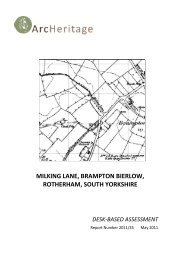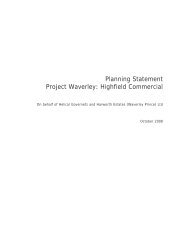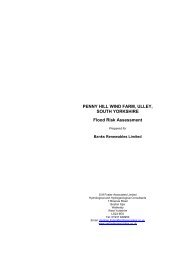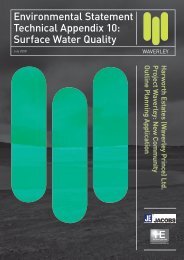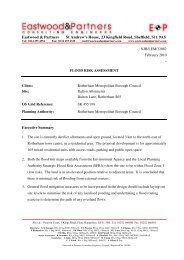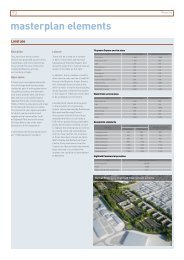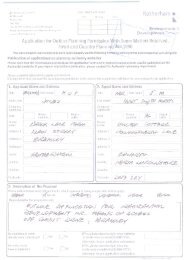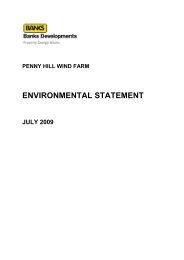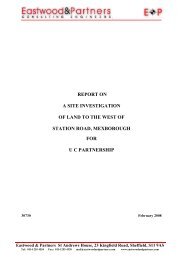environmental statement - Rotherham's Online Application for ...
environmental statement - Rotherham's Online Application for ...
environmental statement - Rotherham's Online Application for ...
Create successful ePaper yourself
Turn your PDF publications into a flip-book with our unique Google optimized e-Paper software.
causing health effects. Of the 126 wind turbines operating in the UK, five<br />
have reported low frequency noise problems, there<strong>for</strong>e such complaints<br />
are the exception rather than a general problem which exists <strong>for</strong> all wind<br />
farms. Hayes McKenzie investigated the effects of infrasound and LFN at<br />
three wind farms <strong>for</strong> which complaints had been received, the results were<br />
reported to DTI in May 2006. The report concluded that:<br />
“infrasound associated with modern wind turbines is not a source which<br />
will result in noise levels which may be injurious to the health of a wind<br />
farm neighbour;<br />
low frequency noise was measurable on a few occasions but below the<br />
existing permitted Night Time Noise Criterion. Wind turbine noise may<br />
result in internal noise levels within a dwelling that is just above the<br />
threshold of audibility, however at all sites it was always lower that that<br />
of local road traffic noise;<br />
that the common cause of complaint was not associated with LFN, but<br />
the occasional audible modulation of aerodynamic noise especially at<br />
night. Data collected showed that the internal noise levels were<br />
insufficient to wake up residents at these three sites. However once<br />
awoken, this noise can result in difficulties in returning to sleep.”<br />
Amplitude Modulation (AM) Of Aerodynamic Noise<br />
9.14 The term AM indicates aerodynamic noise from wind turbines that is<br />
greater than the normal degree of regular fluctuation of blade swoosh. It is<br />
sometimes described as sounding like a distant train or distant piling<br />
operation.<br />
9.15 Following on from the report by the Hayes McKenzie Partnership on low<br />
frequency noise, DEFRA commissioned the University of Sal<strong>for</strong>d to<br />
conduct research in Aerodynamic Modulation of Wind Turbine Noise. The<br />
final report was published in July 2007. The report concluded:<br />
“The term AM indicates aerodynamic noise from wind turbines, but with<br />
a greater than normal degree of regular fluctuation at blade passing<br />
frequency, typically once per second which makes it more noticeable.<br />
The aim of the study was to ascertain the prevalence of AM on UK<br />
wind farm sites, to try to gain a better understanding of the likely<br />
causes, and to establish whether further research into AM is required.<br />
The results showed that 27 of the 133 windfarm sites operational<br />
across the UK at the time of the survey had attracted noise complaints<br />
at some point. An estimated total of 239 <strong>for</strong>mal complaints have been<br />
received about UK windfarm sites since 1991, 152 of which were from<br />
a single site. The estimated total number of complainants is 81 over the<br />
same sixteen year period. This shows that in terms of the number of<br />
people affected, wind farm noise is a small-scale problem compared<br />
with other types of noise; <strong>for</strong> example the number of complaints about<br />
211<br />
Penny Hill Wind Farm<br />
Environmental Statement



